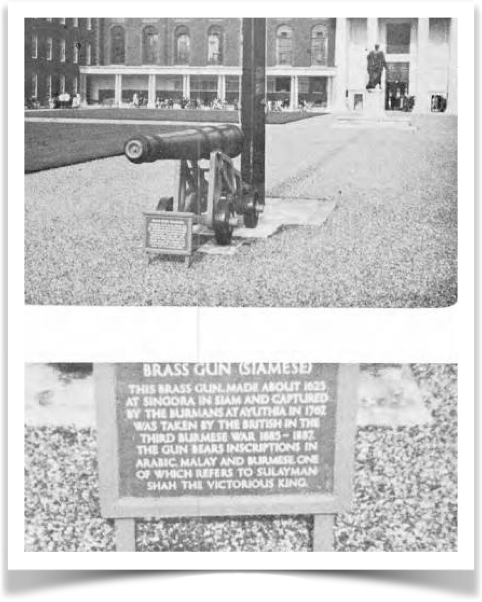I had initially planned to discuss how Raffles and Crawfurd threatened and forced the Sultan to sign Singapura away, even though the initial agreement only allowed the British to rent s strip of land in Singapura's south coast.
However, I noticed that in the discussion on the actual agreement, some readers assumed that the Sultan succumbed because the British had cannons and Malays only knew how to use keris.
Please do not assume Malays did not have access to firearms and technology.
The Malays have used cannons for several hundred years. While the Portuguese account may have been grossly exaggerated, they claimed that the Malays had thousands of firearms (Roberts; Wilkinson).
Firearms was not a foreign instrument to the Malays. The Straits of Malacca was a busy naval route and the Malays met with various civilizations and exchanged technological and intellectual influences for centuries.
The Chelsea Hospital exhibited a cannon with Malay inscriptions made by the Sultanate of Singora (Scrivener). Singora, on the northern part of the Malay Peninsula, which is now in South Thailand, was a Malay Kigdom.
The cannon was made by the Malays. In the 17th century.
It was not because Malays only knew how to use keris. We had the technology.
We have interacted and influenced other civilizations for hundreds of years.
The fall of the Malays was not because we did not have access to firearms. There are other factors to account for the fall.
Insha Allah I will discuss the fall of Singapura and Melaka in another post.
References:
McRoberts, R. W. "An Examination of the Fall of Melaka in 1511." Journal of the Malaysian Branch of the Royal Asiatic Society (1984): 26-39.
Scrivener, R.S. The "Siamese Brass Cannon" in the Figure Court of the Royal Hospital, Chelsea, London.
Wilkinson, R. J. "The fall of Malacca." Journal of the Malayan Branch of the Royal Asiatic Society (1935): 68-69.



